I. Introduction
II. Case Description
1. Study Design
2. Methods
Identification, analysis, and representation of the blood bank’s general inventory management process and depicting its main components. The weaknesses of the current system in meeting user requirements are identified in this step. This step is conducted through observation and interviewing of members involved in blood transfusion at the central blood bank and the hospital blood bank. In our case study, 10 participants were selected by sampling to achieve representativeness or comparability through the typical case sampling method [15];
Describing, separating, and organizing the activities and sub-processes’ elements. This step is conducted through a partnership of the hemovigilance quality-improvement working groups (consist of the selected blood bank staff, nurses, and doctors). In our case study, for this purpose, a semi-questionnaire was prepared to be answered by the participants. The obtained data is analyzed by using the ICAM (Integrated Computer Aided Manufacturing) definition φ (IDEF0) technique [16,17]. The structured analysis of the documents consists of the object’s type, and explanation of its attributes and related methods are conducted in this step;
Proposing an accessible object-oriented design for a typical blood bank’s inventory management process considering user requirements and information collected during the previous steps. This step is conducted through object-oriented programming [18] using unified modeling language (UML) [19,20].
3. Results
1) Implementation results
(1) Identification, analyzing, and representation of the general process
(2) Describing, separating, and organizing the activities and sub-processes’ elements
A set of activities at each step of inventory management considering the processing time;
A set of agents involved with the system at each step;
A set of data (such as predicted requisition, an average of planned surgeries per day, records of patients who are consistently injected) to be retrieved from the history of demands, orders, and inventory to present to the agents;
A set of parameters to be adjusted at each step;
A set of recommendations, notifications, and alarms to be considered by the actors;
A set of data/documents generated throughout the system, which should be exchanged, transferred, and converted among the activities;
A set of activity indicators related to the parameters, which should be calculated and perused to identify trends and evaluate the system’s performance.
(3) Proposing an accessible object-oriented design
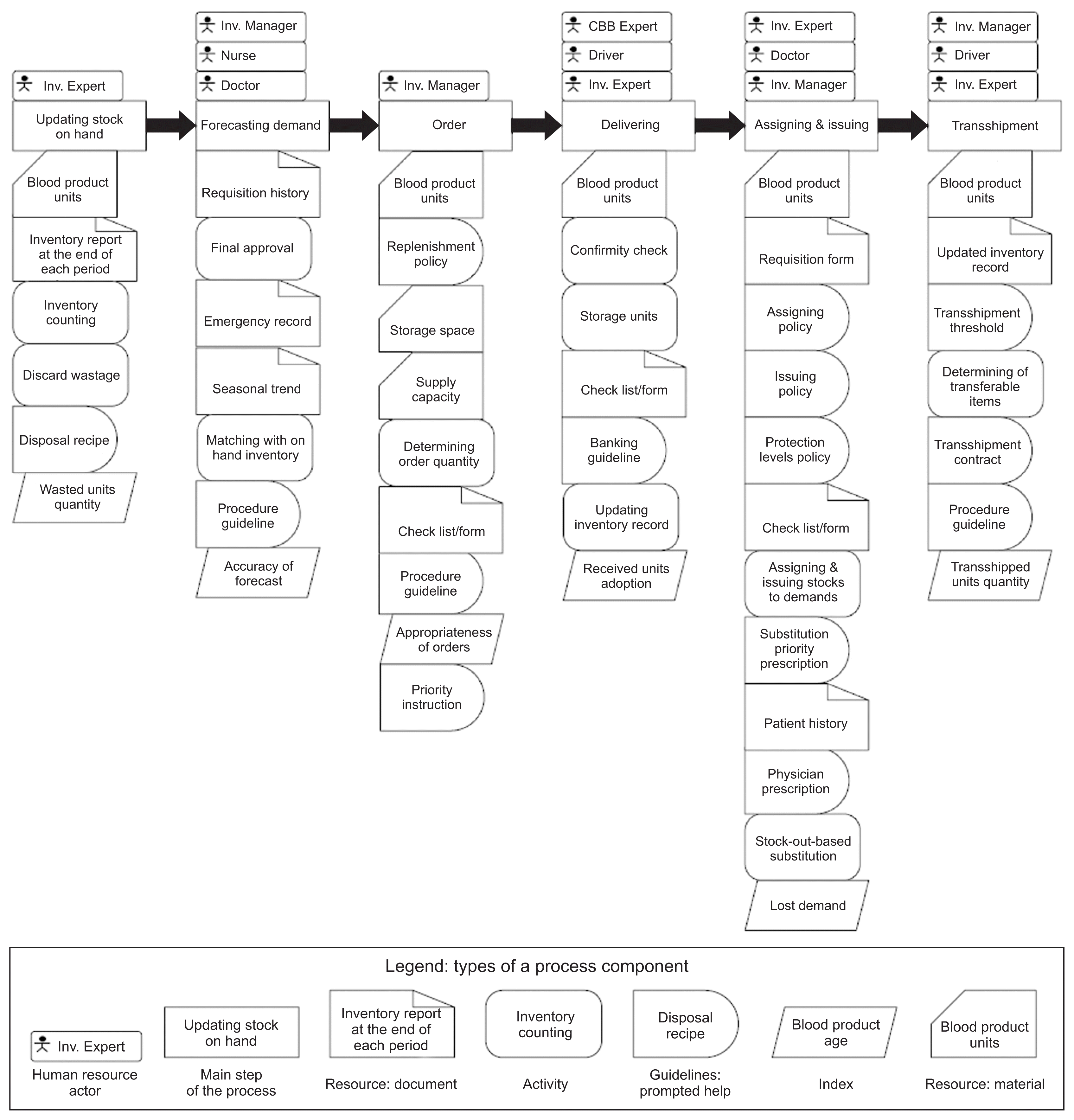 | Figure 3The main steps of the blood inventory management process at the hospital blood bank and their components. |
Table 1
Table 2
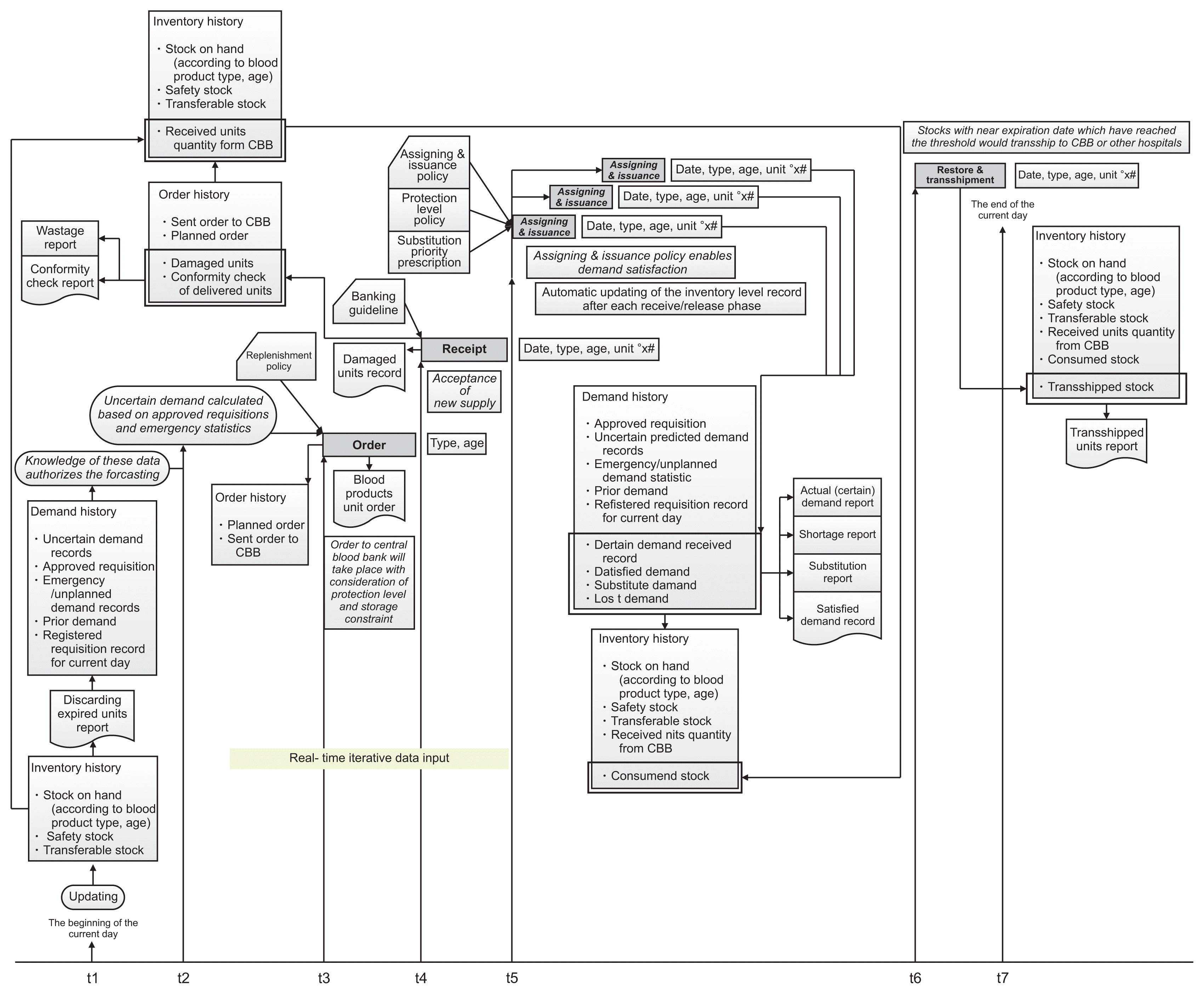 | Figure 6Integrated steps of the hospital blood bank inventory management process with time sequence shows the dynamics of the information systems. |




 PDF
PDF Citation
Citation Print
Print



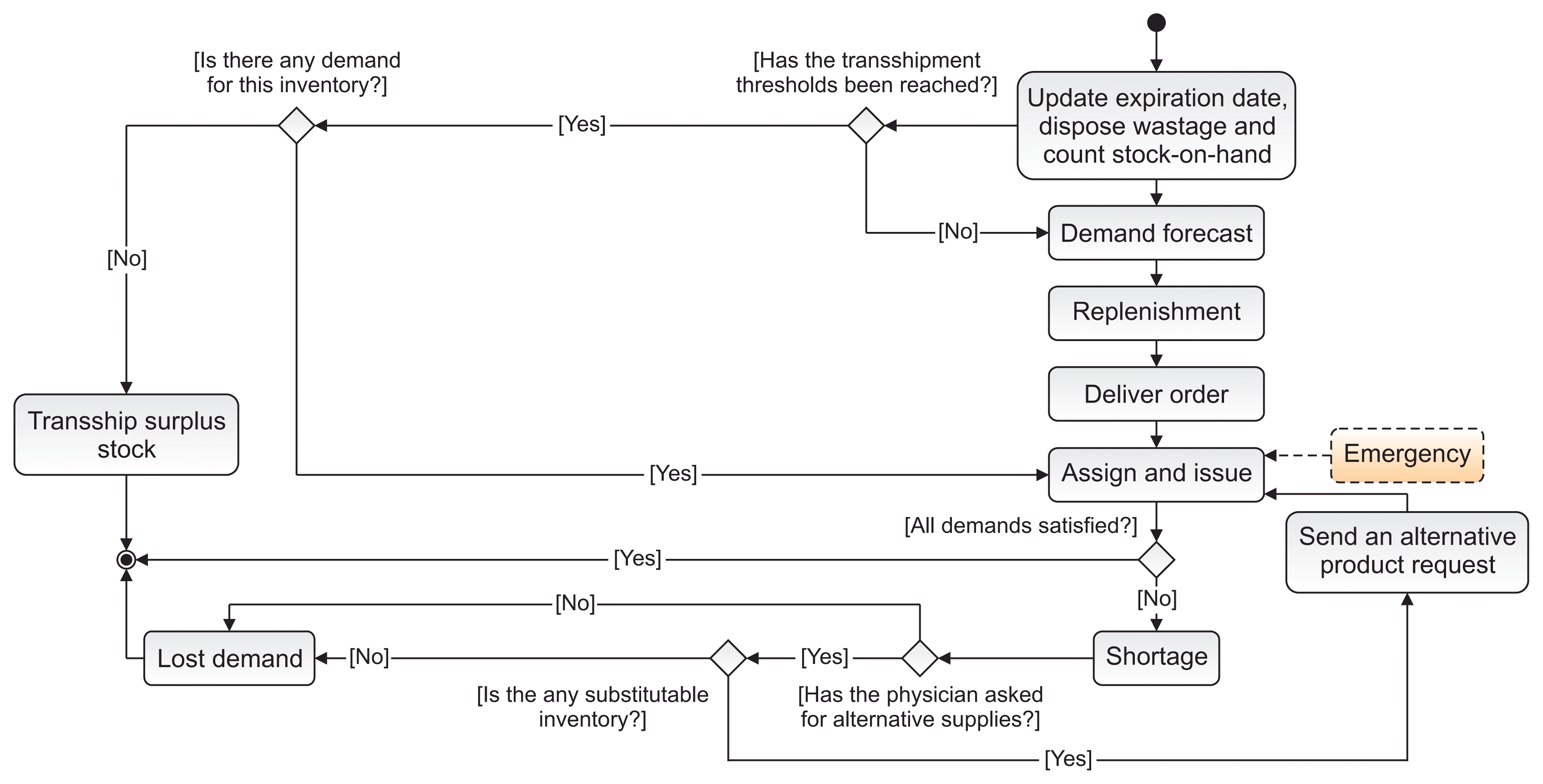
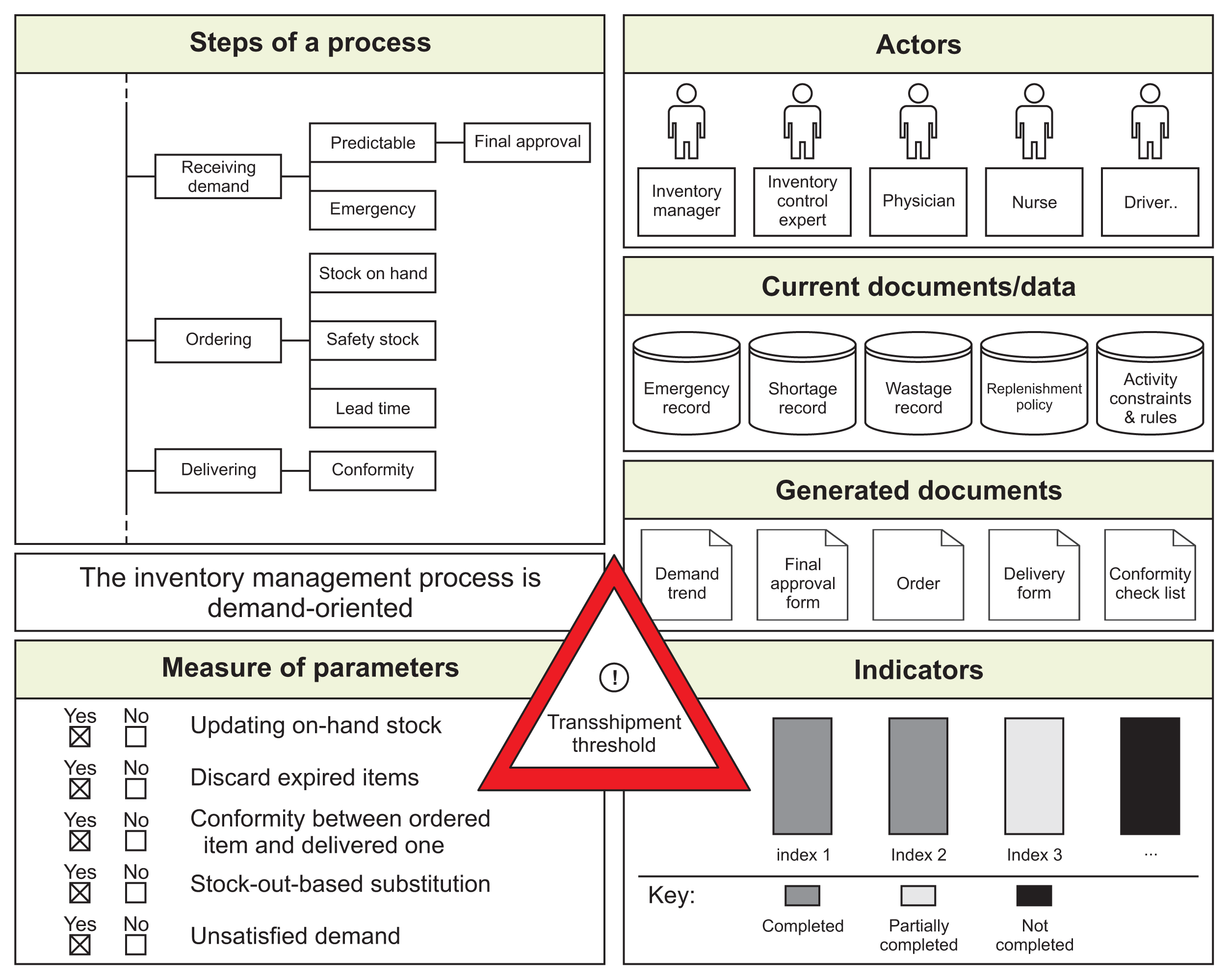
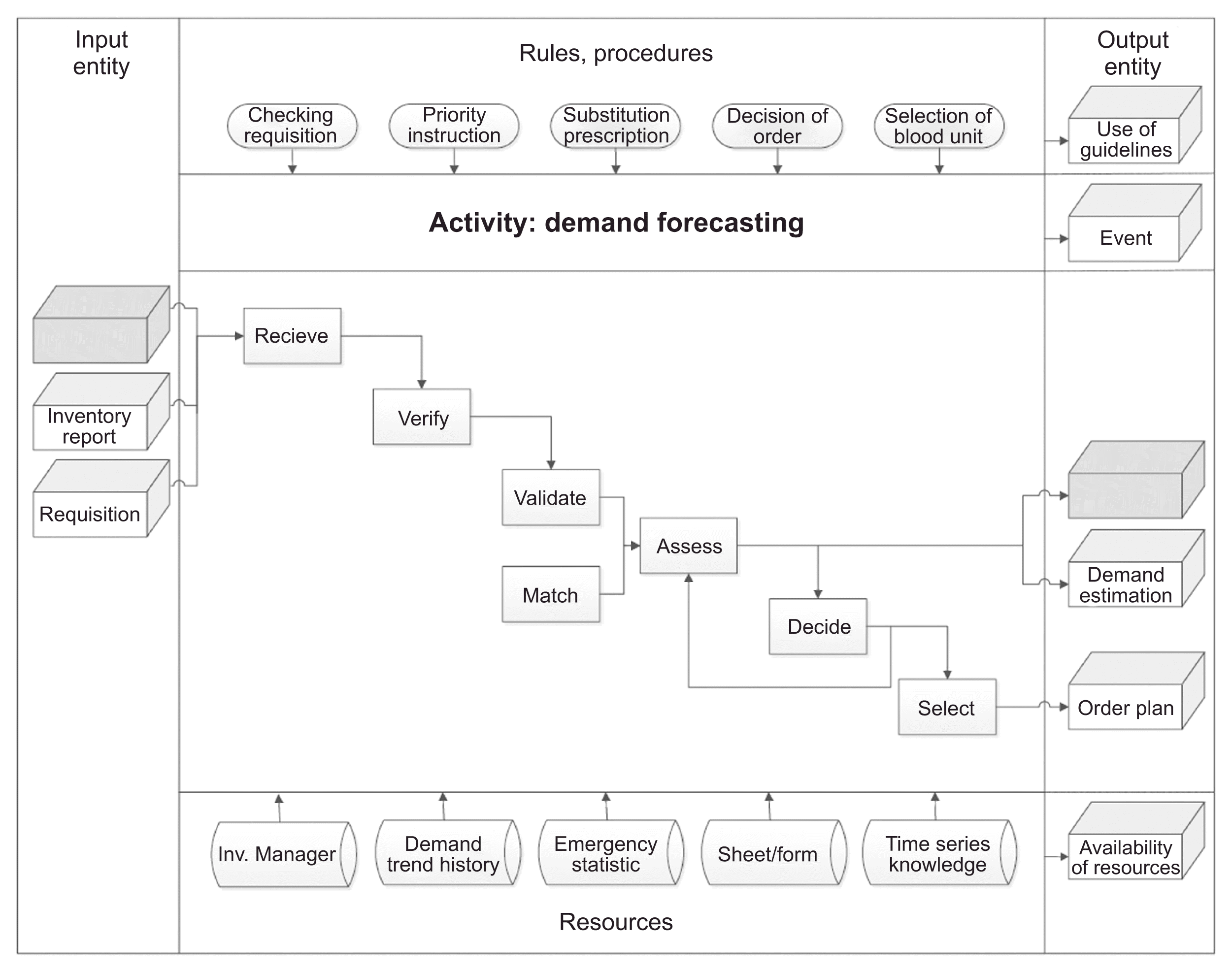
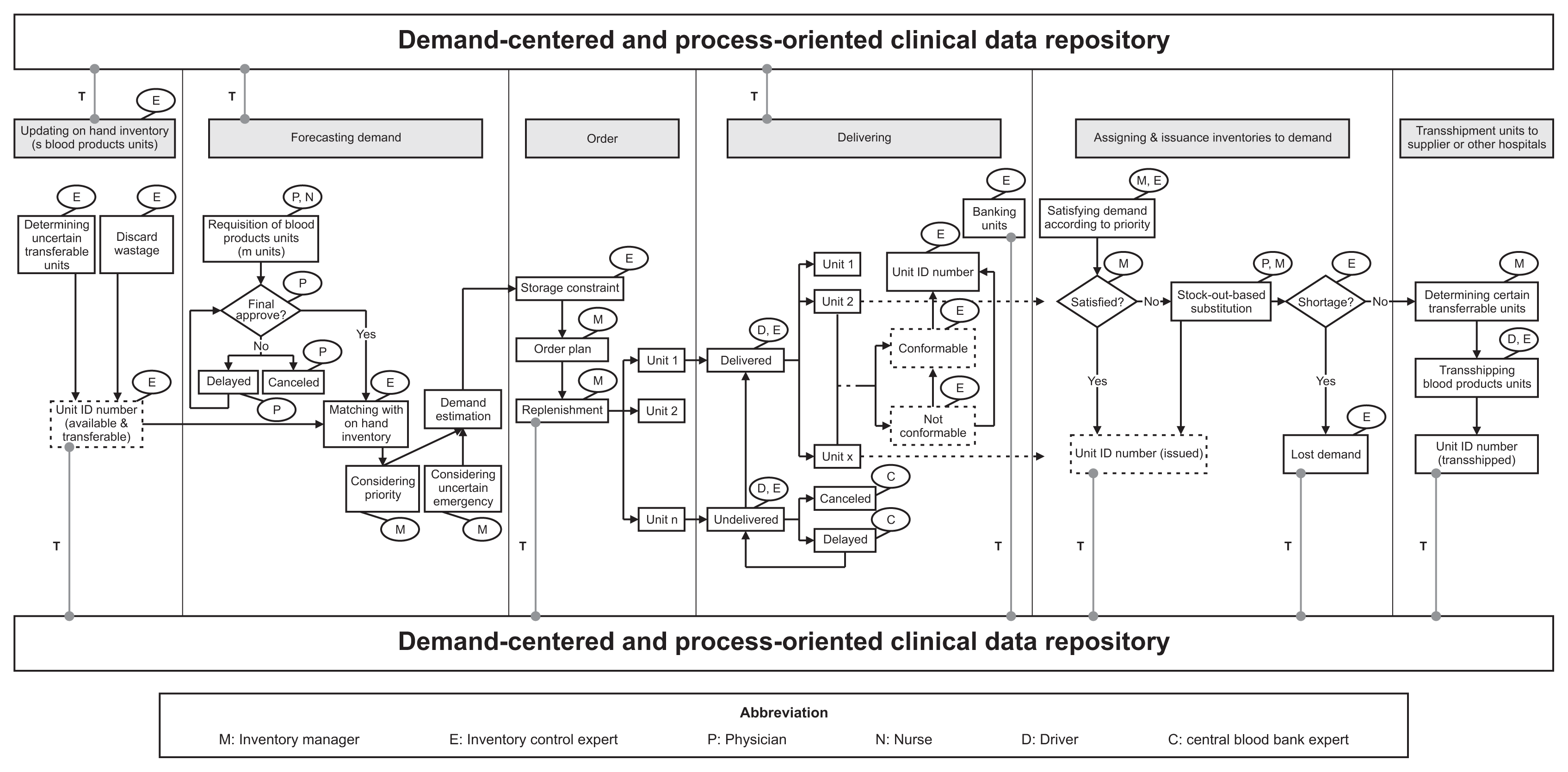
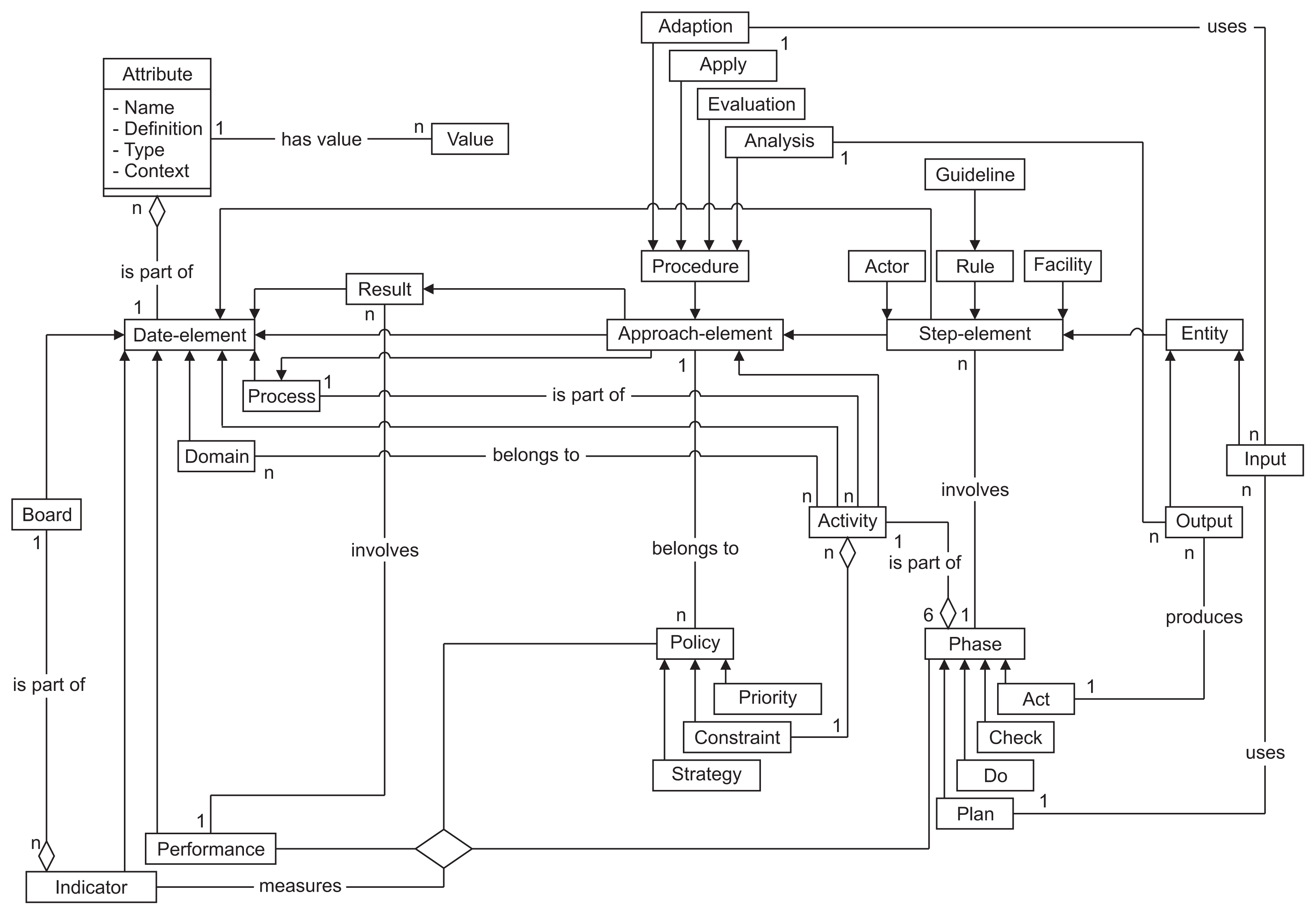
 XML Download
XML Download